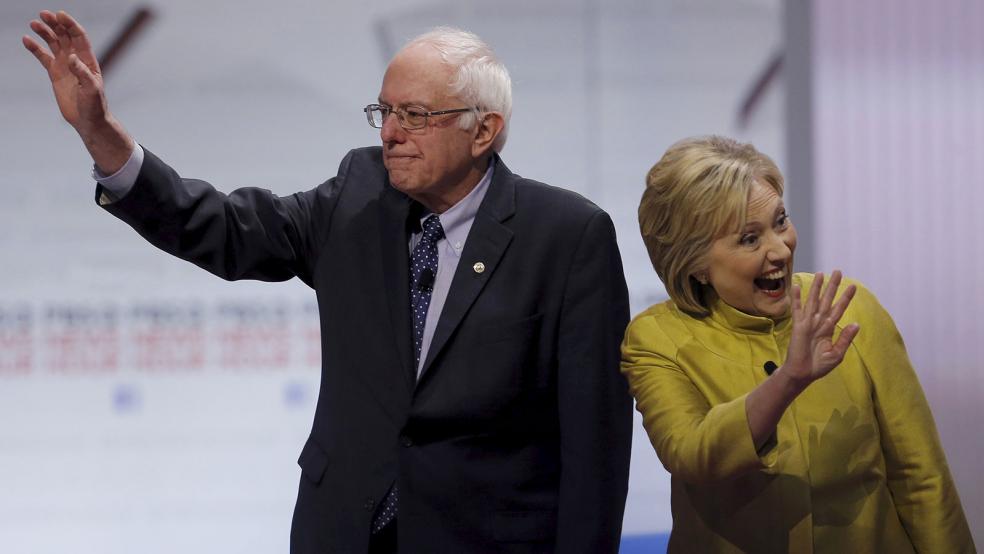How does one explain the rise of Donald Trump to the pinnacle of Republican presidential politics? Ever since the real-estate mogul and reality-TV star began his unprecedented campaign, both detractors and supporters have pinned responsibility on the national media.
Trump’s competitors in the GOP primaries certainly complained repeatedly about broadcasters giving Trump constant media coverage, starving their arguably more serious campaigns of visibility. Some have gone so far as to claim that the media acted purposefully to ensure Trump’s success.
A new study from Harvard’s Shorenstein Center on Media, Politics, and Public Policy may not go quite that far, but it does give national media credit (or blame, depending on one’s point of view) for giving birth to the Trump movement. By constantly covering Trump’s every move, the national media allowed him to win what they call “the invisible primary” in 2015, all but ensuring that other candidates would run out of gas by the time voters had a chance to make their own choices.
Related: Trump: The Gift That Keeps on Giving to Democrats
“The better indicator of who will win the nomination is how well the candidates position themselves in the year leading up to the Iowa caucus,” Thomas Patterson writes in his analysis. “This period—“the invisible primary”—is when the candidates try to put in place the ingredients of a winning campaign.” Media coverage is more than just an end to itself, as it turns out. “In the early going, nothing is closer to pure gold than favorable free media exposure. … Above all, it bestows credibility.”
Ahh … credibility. While Trump had showmanship and name recognition to spare, credibility was the one quality that he lacked, at least until he started running in late spring. With its wall-to-wall media coverage, Trump gained credibility with every turn of the ratings. After all, if media outlets took him seriously as a candidate, why shouldn’t voters?
That question becomes more acute when considering the quality of that coverage, as well as its quantity. Trump generated controversy as a means of grabbing attention, but during this invisible primary, Trump got mainly positive news coverage. In the eight media outlets researched for this study, Trump got $55 million in free positive or neutral mentions (based on ad rates). Jeb Bush, Marco Rubio, and Ted Cruz trailed in the low-to-mid $30 million range, while John Kasich came in at $16 million. Trump’s lowest percentage of positive coverage came from the New York Times – at 63 percent.
Related: Obama to GOP Leaders: Do You Actually Agree With Trump?
Trump wasn’t the only beneficiary of this media gift either, Patterson concludes. Bernie Sanders, who had spent the last few decades in Washington as a socialist backbencher, initially struggled to get any media attention at all. However, by the fall the media had begun to notice Sanders and began casting him as a “gaining ground” candidate, for which the media had a particular incentive.
“A challenger also gives journalists what they relish most—a competitive race,” Patterson points out. While writing about a “real hunger” for a broader discussion on economics, Patterson noted that political media also had a “real hunger” for a David vs Goliath narrative. Starting in the summer of 2015, both the amount and tenor of coverage Sanders received changed dramatically, while coverage of Hillary Clinton remained negative throughout 2015.
By the time the invisible primary ended and the real primaries began, Sanders had built a massive movement that nearly derailed Clinton, and he may have owed it to the political media who wanted to tell that story – or at least have something to cover on the Democratic side.
This has some worrisome implications for politics and media ethics, but perhaps more so, in the electorate itself. Those – mainly Trump opponents – who accused the media of essentially picking the Republican nominee certainly now have substantial evidence for that in the Shorenstein study. Washington Post political analyst Chris Cillizza had insisted that such talk was nonsense, but now admits that the evidence seems compelling.
Related: Is Trump’s Style Wearing Thin? 70% of Americans View Him Unfavorably
“It's hard for me to look at the Shorenstein Center study,” he wrote on Tuesday, “and conclude anything other than that the media played a larger role in the rise of Trump than I previously believed.”
Furthermore, the incentives set up by the media will make the situation worse. Despite job creation and the economy dominating voter priorities, the actual coverage contained little on any policy, even in these areas. Instead, media outlets delivered the red meat to which their consumers responded – “the horserace, the candidates’ strategies and tactics, the hot-button issues, the heated exchanges.”
That fed into a pattern of coverage that Patterson also criticized for its dumbed-down, media-generated “metanarratives.” Bill Kovach and Tom Rosenstiel criticized this trend after the 2000 primaries, and Patterson repeats their warning. “Once a metanarrative is in place, it’s hard for journalists to argue to the contrary and equally hard for them not to play up trivial developments that align with the stereotype.”
In other words, once Sanders becomes the sincere David to Clinton’s calculating Goliath, the media reinforces that metanarrative in all of the coverage that follows. The same holds for Trump’s position as the man with his finger on the pulse of working-class America, a rather ironic position for a billionaire real-estate mogul who has contributed vast amounts of money to both parties. Patterson doesn’t mention the metanarrative about Hillary Clinton and glass ceilings, but it’s also been a constant metanarrative in this cycle. In a sound-bite coverage environment, the incentives line up towards playing up the metanarratives rather than explore ways in which they may not apply.
Related: Hillary Clinton Breaks Another Record: Cash Contributions From Women
What now? Patterson suggests that the major parties rethink their nomination process, most recently reformed after the 1968 election to democratize the results. The problem, Patterson concludes, is that process relies on a media environment oriented toward substance and determining competency. If that ever truly described the national media, it doesn’t any longer. “They are in the business of finding good stories,” he writes, and “Donald Trump was the mother lode.”
The irony of all this is that the media still matters. Polling consistently ranks news media near the bottom of all public institutions, yet they apparently retain enough influence with voters to turn one major-party primary race and nearly turn another. However much the media exploited Trump for ratings and Sanders for narrative, the truth is that voters responded to it, according to Patterson and Shorenstein. We bought the media’s creations.
For representative democracy to work properly, it requires a well-informed electorate and responsible journalists to deliver the critical information needed for that success. When both politicians and journalists become more concerned with entertainment than illumination and voters hold neither accountable for it, we should not be surprised when we end up with caricatures as our final options on Election Day.






